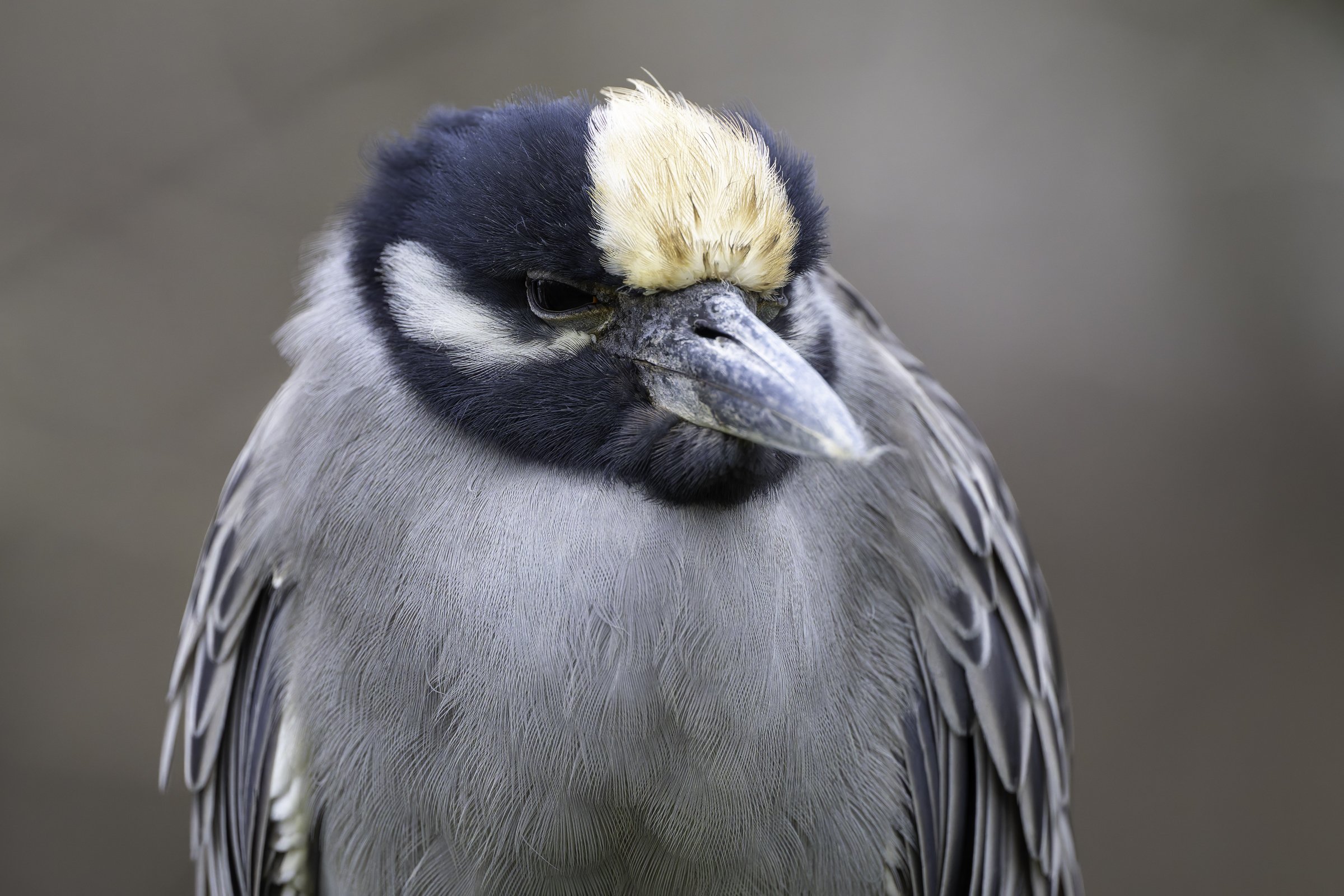Portraits of Yellow-Crowned Night Herons
This past Saturday I returned to Lettuce Lake Park to participate on a walk with the Tampa Audubon Society. I arrived at the park early and immediately made my way to the boardwalk. Out of habit I grabbed my Nikon Z8 and 800mm f/6.3 lens, which was a little bit too much reach. But skies were overcast and I wasn’t really expecting to get any shots anyway. That turned out to be a consequential decision.
At the start of the boardwalk a Red-shouldered Hawk flew in hot, chattering away as he landed on a tree branch pretty high in the tree canopy. For this shot, I was glad to have the 800mm lens. It’s not an award-winner, but I enjoyed pointing out the hawk to other park guests who would likely not have seen it if I wasn’t pointing my lens at it.
Red-shouldered Hawk. Nikon Z8 with monopod-mounted Nikkor Z 800mm f/6.3 VR S lens at f/6.3, 1/1,000 sec, ISO 5000.
Further down the boardwalk I was pleased to find an adult Yellow-crowned Night Heron perched on a branch in the relative open - and facing the boardwalk! usually these birds are buried in the brush and usually have their backs to you, so this was just awesome. This bird was also close - like real close. Photographing a bird at the 800’s minimum focusing distance (16.41 feet) at a wide open aperture results in a depth of field of only half an inch. Which means that if the bird is looking at you and you focus on the eyes, only 0.25 inches in front of the eyes and 0.25 inches behind the eyes will be in focus. The rest will be blurry. And that’s what you have in this portrait. I even stopped down to f/8.0 which results in a depth of field of 0.62 inches.
Yellow-crowned Night Heron. Nikon Z8 with monopod-mounted Nikkor Z 800mm f/6.3 VR S lens at f/8, 1/640 sec, ISO 3200. Focus was on thee right eye which is tack-sharp. However, as you move outside of the depth of field, the bird becomes out of focus. Note the tip of the beak and the outer edges of the bird’s body.
While taking far too many images and understanding the consequences of being so close to the bird, I came to the realization that this might be a good opportunity to do some focusing stacking. This is a technique often used by landscape photographers where multiples photos of the scene are taken, but in each image you focus on something in the scene that is on a different plane. The images are “stacked” in software like Photoshop and the result in a single image composite in which everything is sharp from the foreground to the background. The same technique can be used in bird photography, but it takes a very, very still bird. Which so happens to be a perched Yellow-Crowned Night Heron.
I switched my autofocus to single point so that it wouldn't automatically be drawn to the eye. I took one picture of the eye, then the base of the beak, another in the middle of the beak, another at the tip of the beak. Now, in this composite photo, you can see that I have sharp focus from the eyes all the way to the tip of the beak. As a bonus, he was giving quite a quirky look.
Then I thought about taking a pano shot, taking a series of shots from the top of the head to the bottom on the feet. The following image is a composite of six images, resulting in one photo. The final image isn’t perfect (there is still some blurriness in areas that I would have liked to be sharp), but the auto-stacking and auto-blending tools in Photoshop were really a breeze to use. If you want to learn more, check out this YouTube video from landscape and wildlife photography Simon d’Entremont.
Yellow-crowned Night Heron. Six-image composite. Nikon Z8 with monopod-mounted Nikkor Z 800mm f/6.3 VR S lens at f/8, 1/640 sec, ISO 5600.
If focus-stacking and pano composites are not up your alley, just wait for the right moment. In this final image of this adult, the bird has turned his head to a side profile, bringing most of the face and bill into the same focal plane. Only one image required.
Yellow-crowned Night Heron. Four-image composite. Nikon Z8 with monopod-mounted Nikkor Z 800mm f/6.3 VR S lens at f/8, 1/800 sec, ISO 9000.
Further down the boardwalk we came across of a cluster of six Yellow-crowns, a mix of both adults and juveniles. One juvenile in particular was perched in the open and gave me a really nice look. This bird was further away so I was able to reduce the aperture to f/6.3.
Yellow-crowned Night Heron (juvenile). Nikon Z8 with monopod-mounted Nikkor Z 800mm f/6.3 VR S lens at f/6.3, 1/640 sec, ISO 2000.
The next time you are photographing birds up close, keep these tips in mind:
Stop down the aperture to maximize depth of field
Take numerous shots with the mind of creating focus stacks and/or panos.
Happy birding!






